Text
The Functionality of Setting CW’s Riverdale: the Additive Comprehension of Betty Cooper’s Character (re-write)
In “Transmedia 202″, Henry Jenkins lists additive comprehension and multimodality as key components in unpacking transmedia texts. Additive comprehension, Jenkins explains, refers to “the degree that each new text adds to our understanding of the story as a whole” (Jenkins Transmedia 202). Jenkins divulges into this idea by explaining the distinction between adaptations vs extensions of “the story” in response to Christy Dena’s challenging of the adaptation-extension binary: “an adaptation represents an interpretation of the work in question and not simply a reproduction… all adaptations to some degree add to the range of meanings attached to a story”. I would argue that CW’s show Riverdale is less so an extension of Archie Comics series (the original ‘text’ running from 1942 to 2015), but rather an adaptation as it utilizes the unique allowances of a digital medium in order to build an interpretation of the world in which it is set. See here for a description of Riverdale.
The modality of Betty Cooper’s character from Archie comics to Riverdale has fluctuated in terms of interpretation. This can be observed in how her form has changed from print to digital: early print Betty’s skimpy clothing and open body language insinuates a sense of confidence that is not highlighted in her digital form. This is significant as Betty’s level of confidence affects how the reader/audience understand her motivations and actions towards others (particularly love interest Archie). However, one key narrative remains a core theme in her arc: on the surface, she is the archetypal girl-next-door (to Archie Andrews) however, more discreetly, grapples with a characteristically un-feminine dominance. Betty’s characterization in the early Archie Comics (see first image below) lacks somewhat in nuanced complexity: Betty’s soul preoccupation is Archie and her defiance is portrayed as jealousy.
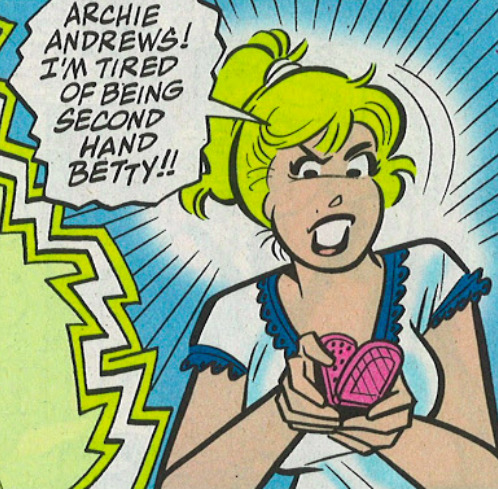
In the latest issue of the Archie Comics, Betty’s defiance takes a new interpretation as her appearance becomes boyish to suggest a rejection of gender normativity. This arguably still lacks a nuance in her character development as she has yet to be granted both femininity and rational anguish.
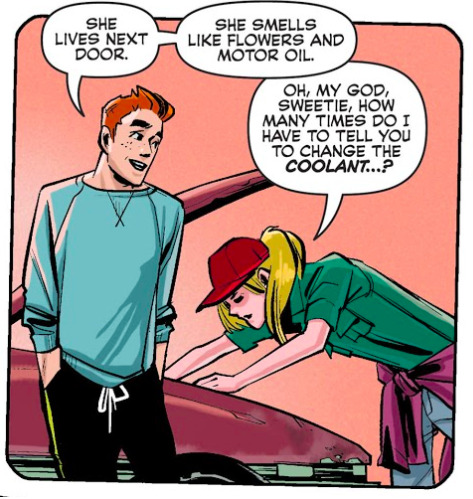
As well as Betty’s form, her setting has become more defined from print to screen to engage with her arc. In Riverdale, the creators have more closely elaborated on this narrative by providing her with a primary space in which she reconciles with her inner conflict: her bedroom. In its design, the space is highly feminized (see images below) and how she interacts with the space is similarly so. For example, the two sites Betty is often placed is at her window staring longingly out at Archie or sat staring at her reflection at her dressing table. There is tangible additive comprehension in these scenes: the most volatile confrontations between herself and her toxic mother happen in these sites and often close with a shot of Betty staring expressionless into the mirror. With her child-like bedroom in the background, these shorts suggest Betty’s home life as far more sinister than the comics let on, adding complexity to her character. As Jenkins says in Christy Dena’s words, “the shifts between media mean that we have new experiences and learn new things”. Thus, the subtleties made possible by the camera contribute to the overarching narrative that imagines Betty as an unassumingly complex character.
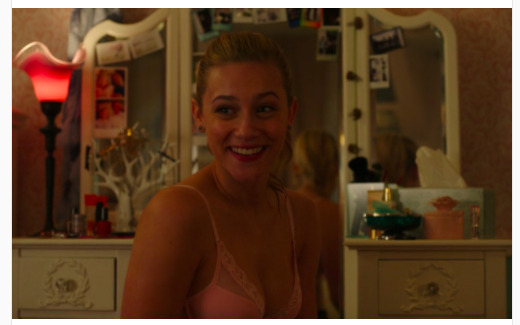

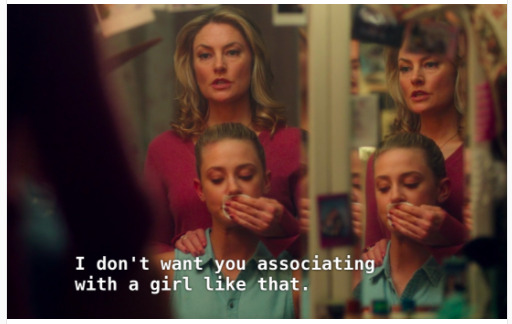
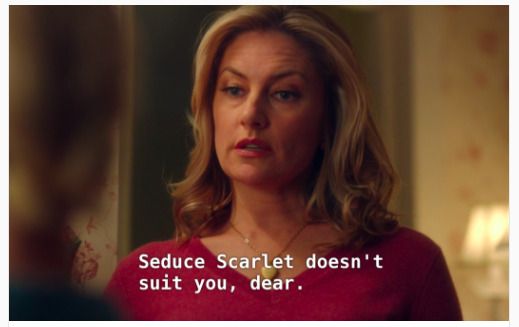
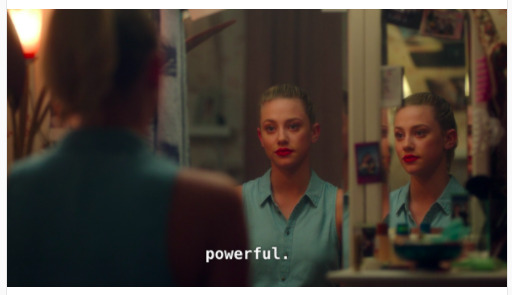
works cited:
Jenkins, Henry. “Transmedia 202: Further Reflections.”Confessions of an Aca-Fan, 31 July 2011, henryjenkins.org/2011/08/defining_transmedia_further_re.html
2 notes
·
View notes
Text
Tumblr Post # 2 Rewrite
*This is a rewrite of my Tumblr # 2 post which was originally submitted as “Halo’s Master Chief in terms of para-/inter-text networks” on February 4th, 2018.
In the article by Marshall on “New Intertextual Commodity”, one part that I found very interesting is his discussion on the idea of a multimedia event. Though discussed through a lens of films like Jaws (1975) and Titanic (1997), in terms of video games, Halo 2 would undoubtedly be mentioned in the discussion of video game based multimedia events. Being the bestselling first-gen xbox game of all time, the video game was preceded by many games, websites, and toys/collector’s items. Halo 2 accomplished all of these before they released the game on November 9, 2004. One of the many games/websites that were created in the months prior to the release was an ARG (alternate reality game) called “I Love Bees”, which focused on a website believed to be on beekeeping, but was “actually” run by a rogue AI (pictured below). It had the added benefit of providing promotional material while also learning more about the world of Halo and Halo 2 specifically. This also served the double-function of being a game and a website that focused on promotional material and was very successful at doing both of these. The toys and collector’s items that were made around the time of Halo 2 were primarily targeted to young teenagers and kids in order to pique their interest into the series but they were also popular with many adult collectors and fans of the series who saw value in specific boxed characters (a picture of one of these Halo 2 action figures is posted below). One of the interesting things in Marshall’s text is also how he mentions how, when describing the “A.I.” ARG, the game outlasted the film. In a way, Halo 2 was the same. While the game was fantastic and was one of the best games of 2004 (and is still played to this day), certain aspects of the film were criticized and a great deal still played the ARG that was promotional material months after the game came out. While the ARG no longer exists, the ARG was very popular and many fans remember this fondly. This whole multimedia event really stitches the video game environment/industry together and shows that video games and other media fields besides film can be adept in multimedia events and can generate the same kind of turn out.
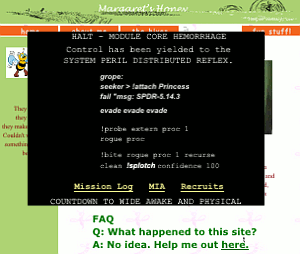

Marshall, David P. “The New Intertextual Commodity”. The New Media Book, edited by Dan Harries, BFI Publishing, 2002, 76-78.
“Prepare for all-out-war.” Sydney Morning Herald, 30 August 2007, https://www.smh.com.au/news/biztech/prepare-for-allout-war/2007/08/30/1188067256196.html.
0 notes
Text
LOTR and Wikis
With the essay Sites of participation: Wiki fandom and the case of Lostpedia by Jason Mittell we have a deeper understanding of fan collaboration in terms of the development of wikis. What is expressed about the development of these wiki’s is the level of collaborative work, and that that work can be tracked on its continued evolution of it and its creators. It is shown that they play a large role in examining how fan communities reflect on the work in a creator’s way and more than just that of a fan.
With the Lord Of the Rings Wiki extensive readings and work has been done to develop the site and is continued. What remains unique is that even when a work has come to an “end” it is still constantly under review and reconstruction on the wiki page. What is particularly interesting is how these fans chose to display the page. The decision of what is most important or what the fandom most what’s to further explore has culminated in hundreds of developed pages and visits by fans. The Lord of the Rings fandoms breaks up the most looked at sections into Characters, Books, and Movies. This is quite telling of how the fandom denotes importance in the fandom.
Uniquely though what Mittell highlights is the ever changing quality of wikis and why this is both frustrating and a benefit. In wiki’s possibilities for the work and how people understand the work become a constant battle that is played out in various sections of the fandom. Mittell suggest though that when changes in wiki’s are made that have reactive responses and create an issue for groups among the fandom that it is possible that what can and often happens is if an individual decisions will either be passively accepted or it will be vehemently changed to please the loud fan group.
Originally posted by yourdeathisclosesobetterbebrief
What is also of interest is the ways in which the fans contrive canon and their interaction with theory and fan creation. He discusses that Lostpedia has their own theory page that allows wiki editors to theorize on the canon. However in the Lord of the Rings wiki there is not such a page. This is part is due to what the fandom decides is of more prestige. The Lord of the Rings wiki shows pride in being extremely true to canon and not having issues of untruthful information. Part of their name is “ One wiki to rule them all” and despite the use of word play from the works it also goes to show where they believe they stand in terms of standard for a wiki and that is high. Each wiki runs in a way on their own rules and what is most interesting are how each of those wikis decide on those rules as sets of boundaries for themselves. Lastly how the fans all work together in said boundaries and result in such a uniform information station shows the incredible persistence of fans.
“The One Wiki to Rule Them All.” The One Wiki to Rule Them All | FANDOM powered by Wikia, lotr.wikia.com/wiki/Main_Page.
Mittell, Jason. “Sites of Participation: Wiki fandom and the case of Lostpedia .” View of Sites of participation: Wiki fandom and the case of Lostpedia | Transformative Works and Cultures, Praxis, journal.transformativeworks.org/index.php/twc/article/view/118/117.
#blucosmo
1 note
·
View note
Text
Robert Kirkman and Authorial Paratext
In “Who’s Steering the Mothership? The Role of the Fanboy Auteur in Transmedia Storytelling”, professor Suzanne Scott analyzes the authorial archetype of the ‘fanboy auteur’ (or author) and the role they play within transmedia franchises. Transmedia stories are separate but connected narratives presented across multiple mediums by multiple creator, which form a ‘“unified and coordinated entertainment [experience]”’ (Scott, 44). Maintaining this narrative and stylistic consistency across multiple texts and mediums necessitates “the construction of a unified author figure to serve as a creative and textual coordinator” (Scott, 44).
An answer to this is French auteur theory, which dictates that the director, or auteur, “is viewed as the major creative force in a motion picture” (The Editors). An auteur is seen as the project’s sole deciding ‘voice’ and authority over the narrative and its interpretation. Because of this; the “auteur’s explanation of textual events is now considered integral to a comprehensive understanding of the transmedia story” (Scott, 46-47). The archetypal fanboy auteurs are presented to audiences as fellow nerdy, pop-culture obsessed fans rather than some out-of-touch studio executive or for-hire director. The audience trusts that the fanboy loves or understands a given property as much as they do simply because of how relatable he is to them; granting him a great deal of authority.
Scott discusses fanboy auteurs manipulating their goodwill with their audience of fellow fanboys in order to place prominence on their interpretation of the text over that of the fans. “[The] fanboy auteur equates [their] close proximity to the fans with an understanding of their textual desires and practices” (Scott, 44), causing some creators to feel entitled to using authorial paratexts as a platform for reinforcing their authorial power. They are the ‘human bible’ of the franchise, with their supreme knowledge being gospel (Scott).

An example of a fanboy auteur flexing their interpretive authority can be seen in an interview with Walking Dead creator Robert Kirkman. In a talk with The Hollywood Reporter, Kirkman definitively states that series lead Rick Grimes will certainly die by the comic’s conclusion and that he finds it quite likely that he will live in the television series. As the sole creator and de-facto auteur of the Walking Dead franchise, Kirkman has a privileged voice. His interpretation of the texts carries a weight of its own, overshadowing the voices of the fans, who may feel differently. Rather than respecting fan interpretation and encouraging participatory fan culture, Kirkman (as auteur) has definitively stated a hardline belief about the series, cutting off any further discussion that may have occurred. This is detrimental to the very nature of transmedia stories and authorial paratexts and auteur theory allowed for it to happen.
Works Cited:
Goldberg, Josh WiglerLesley. “'Walking Dead’: Is Rick Going to Die?” The Hollywood Reporter, 25 Feb. 2018, www.hollywoodreporter.com/live-feed/walking-dead-is-rick-going-die-1086861.
The Editors of Encyclopædia Britannica, The Editors of Encyclopædia Britannica. “Auteur Theory.” Encyclopædia Britannica, Encyclopædia Britannica, Inc., 27 Dec. 2017, www.britannica.com/art/auteur-theory.
Scott, Suzanne. “Who’s Steering the Mothership? The Role of the Fanboy Auteur in Transmedia Storytelling.” The Participatory Cultures Handbook, pp. 42–52.
1 note
·
View note
Text
Nitpicking
When I was looking for a wiki article to use for this class I ended up on a page for the same Star Trek episode I discussed in my last post (The City on the Edge of Forever) and as I went through the talk section I found a discussion that I felt hit on a lot of points about fan communities we’ve discussed recently and was almost bizarrely funny to me. It involves one man with strong opinions about Nazi military history.
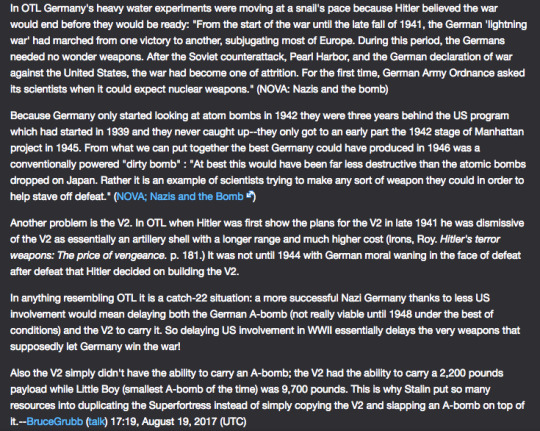
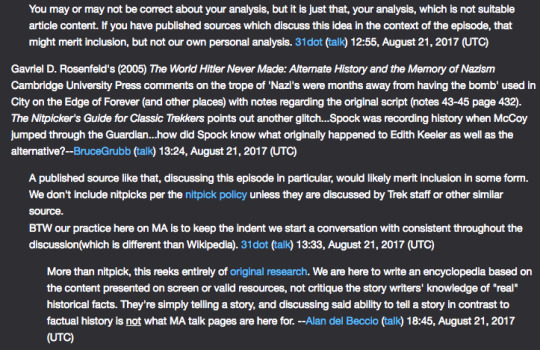
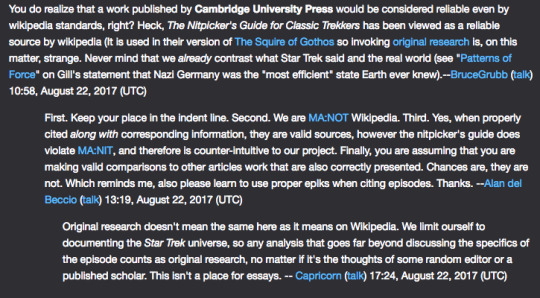
Since that’s a lot of text, a brief summary: Bruce argues that the entire central conflict of the episode is inaccurate because even if the US had entered WWII later than it did, the Germans wouldn’t have been able to develop effective nuclear weapons before the end of the war. 31dot points out that none of this matters in context of the episode and in response Bruce presents his sources. 31dot and Alan again tell Bruce that actual history doesn’t matter here, what matters is what the show says happened in history. Bruce sticks to his guns but is again shut down by Alan and Capricorn, who remind him that the Star Trek wiki is not the same thing as Wikipedia.
In a roundabout away, Capricorn pointed out the way wikis level the playing field when they pointed out that the analysis here all holds the same merit ‘no matter if it’s the thoughts of some random editor or a published scholar.’ Even if it’s used dismissively it shows the ways in which collaborative fan communities have complicated the idea of authority. Hidden behind a screen and a username, someone could be a scholar or just a dude with a lot of free time and some really strong opinions. As Mittel says “there is no inherent reason why wikis should be suited more for recording than for editorializing, and many wikis have been used as sites of collaborative creativity, collective brainstorming, and other activities that go beyond gathering and organizing facts (Dena, Douglass, and Marino 2005; Mason and Thomas 2008). But for most people, the word wiki evokes Wikipedia and its assumed objective model of writing.” I found this example interesting because while Bruce might be technically correct in the history of our world his theory is at odds with the historical fact of the Star Trek world so in the eyes of the rest of the fans, he’s just wrong.
And the ways in which Alan and 31dot point out Bruce’s failure to follow proper post format highlights how fan communities build their own rules and structures for acceptable discourse. It’s not just that he’s posting irrelevant information, he isn’t posting it right. For all the talk about freedom and new avenues of discussion most fan communities still have rigid guidelines on what is and isn’t okay within those communities. A lot of this discussion has centered around things like fanfiction and slash, which are often looked down upon as lesser forms of fan creativity because they tend to deviate more from accepted canon.
BruceGrubb, et al. “Talk: City on the Edge of Forever; Dated Premise.” Memory Alpha, Aug. 2017, memory-alpha.wikia.com/wiki/Talk:The_City_on_the_Edge_of_Forever_(episode).
Mittell, J. “Sites of Participation: Wiki Fandom and the Case of Lostpedia”. Transformative Works and Cultures, Vol. 3, July 2009, doi:https://doi.org/10.3983/twc.2009.0118.
0 notes
Text
Prelude to Axanar and the Star Trek Film Academy
In Authorized Resistance: Is Fan Production Fracked? professor Suzanne Scott explores convergence culture and the types of fan production that may or may not occur under the such a new paradigm. Scott looks to the series Battlestar Galactica and its focus on fan-centric new media texts such as a web-series and podcast. She argues that a saturation of such works may actually limit the types of fan production that can occur as the official author(s) (in this instance Ronald D. Moore and Sci-Fi) inherently have a greater creative and canonical authority than do fan creators. Fan authors feel a lessened sense of flexibility and freedom as the official authors are creating works that occupy spaces otherwise occupied by fan production and can set rigid canonical and temporal guidelines. Expounding upon the work of Henry Jenkins, Scott describes the BSG approach toward fan interaction as a collaborationist approach, in contrast to the prohibitionist approaches that other creative entities may have toward fan produced transmedia works.
In order to illustrate Scott’s argument however, I feel it best to point to CBS and Paramount Pictures and their decidedly prohibitionist response to Prelude to Axanar, a 2014 fan film based on the Star Trek series. In the past, Paramount Pictures have allowed the creation of non-commercial Star Trek fan films under certain conditions. However, Paramount and CBS, who collectively own the Star Trek license, decided to move forward with a lawsuit against the creators of the 21-minute fan film, on the basis of copyright infringement over use of the Klingon language and other Star Trek imagery, according to the film’s Wikipedia article. What set Axanar apart from past films was its $101,000 Kickstarter campaign and proposed feature film adaptation, which itself garnered over $1.2 million in funding (Rottenberg).

Since the lawsuit, CBS and Paramount have seemingly taken a more collaborationist approach to fan works, though not without a great deal of drawbacks. The have enacted a new set of guidelines for the way Star Trek fan films should be made in the future (e.g. no longer than 15-minutes or two 15-minute segments, films must be non-commercial and amateur, etc.). In obvious response to Axanar, fan films must be self-contained, with no implied sequels or remakes. As such the planned Axanar feature is no longer a possibility, instead being replaced by two 15-minute films, with substantial changes being made to the original short (Rottenberg). To take this sense of collaboration further, CBS has announced a Star Trek Film Academy, meant to teach filmmakers how to make fan films (Pinchefsky).
Despite their seeming attempts at soothing fan reaction to the Axanar lawsuit and officially granting support to fan films, CBS and Paramount have taken a collaborationist approach to fan production that has in all actuality irreparably altered the Star Trek fan community. Fan film creators are now pressured to create films within the strict set of expectations held by the two companies and with the new Film Academy, it is fairly likely that precedence will be given to the more “official” fan works made by the organization. Actual amateur fan films may soon fall to the side. Though time will tell the sort of films created by the Film Academy, it, alongside the new guidelines seems like a response in the wrong direction and may have a stifling effect for future fan production.
Works Cited
Scott, Suzanne. “Authorized Resistance: Is Fan Production Frakked”, Cylons in America Critical Studies in Battlestar Galactica, edited by Tiffany Potter and C. W. Marshall, Continuum New York and London, 2008, pp. 210–222.
startrekaxanar. “Prelude to Axanar.” YouTube, YouTube, 15 Aug. 2014, www.youtube.com/watch?v=1W1_8IV8uhA&list=UUxRrQIpejUXUi8i4mAbzSlg.
Wikipedia Contributors. “Prelude to Axanar.” Wikipedia, Wikimedia Foundation, 19 Nov. 2017, en.wikipedia.org/wiki/Prelude_to_Axanar#cite_note-23.
Rottenberg, Josh. “CBS and Paramount Pictures Announce New Guidelines on 'Star Trek' Fan Films.” The Los Angeles Times, 23 June 2016, www.latimes.com/entertainment/movies/la-et-hc-star-trek-fan-film-guidelines-20160623-snap-story.html.
Pinchefsky, Carol. “CBS Announces Film Academy for Star Trek Fan Films.” Syfy, SYFY WIRE, 7 Aug. 2017, www.syfy.com/syfywire/cbs-announces-film-academy-for-star-trek-fan-films.
0 notes
Text
As explained in Ph.D. Suzanne Scott’s essay, Who’s steering the Mothership? The role of the Fanboy Auteur in Transmedia Storytelling, the fanboy auteur —sort of a child of two worlds— is a fan figure that has acquired canon authority, and, in order to maintain his “reader persona” (which gets him in the side of the fans), kill his own “writer persona” (or so they make us believe).
Stranger things is a sci-fi horror epic that acts as an homage to ‘80s pop culture.
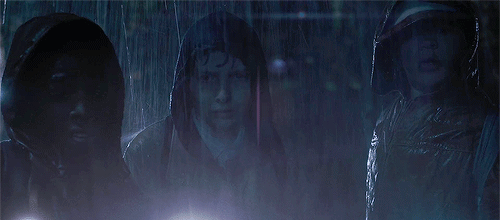
Brothers Matt and Ross Duffer, presenting themselves as two more ‘80s kids filled in nostalgia, step out as disciples of cult writers and filmmakers John Carpenter, Steven Spielberg, Stephen King and George Lucas.

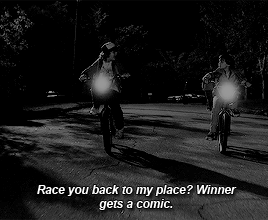
While the Duffers have opted to create their own universe instead of expanding those created by the authors above, and have never worked per se as protégés of said pop culture figures, they appear publicly accepted as their heirs… but would it be so if not for…


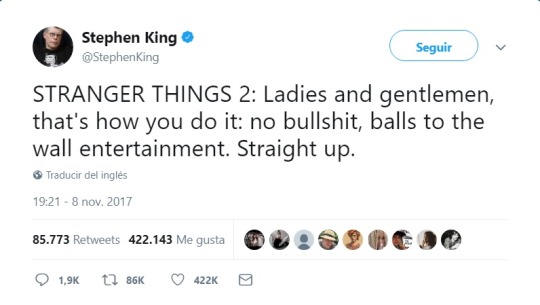
King’s not only approval, but praise of the show, clearly drew the attention of several Gen X cinephiles who at first had dismissed it as a show for millennials (this I can tell from my own personal experience talking with such cinephiles), and gained it the affective value of many people who came of age with King’s books.


Funnily enough, the famous author is putting them below his own shadow. I have seen many people of all ages enrage about the Duffer brothers’ multiple plagiarism, only being calmed by learning that King actually gives his approval. So now, comes the question: are Stranger things fans loyal to Stranger things, or to Stephen King? What would happen is Stephen King comes to say “I don’t like Stranger Things anymore”?

The Verge editor, Bryan Bishop, writes on Feb 17, 2017:
Stephen King and J.J. Abrams are going to show Stranger Things how it’s done.
He then does allusion to Castle Rock, a series King and producer J.J. Abrams are developing for Hulu. What will happen when fans do not need to seek for an Abrams-esque or King-esque experience in Stranger things, when they get a show from the true auteurs?
Scott, Suzanne. “Who’s steering the Mothership? The role of the Fanboy Auteur in Transmedia Storytelling”. The participatory cultures handbook, edited by Aaron Delwiche and Jennifer Jacobs Hendersen, Routledge, 2013, pp. 43-52.
http://www.zen134237.zen.co.uk/Stranger_Things/Stranger_Things_-_Bible.pdf
https://en.wikipedia.org/wiki/The_Duffer_Brothers
https://twitter.com/stephenking/status/754865415587758080?lang=es
https://twitter.com/stephenking/status/754699429047836672?
https://twitter.com/StephenKing/status/928462592816926720?ref_src=twsrc%5Etfw&ref_url=https%3A%2F%2Fwww.quora.com%2FWhat-are-Stephen-King-and-Steven-Spielberg-thoughts-on-the-show-Stranger-Things
https://www.theguardian.com/tv-and-radio/ng-interactive/2017/oct/14/duffer-brothers-spielberg-80s-stranger-things
https://www.theverge.com/2017/2/17/14655406/jj-abrams-stephen-king-castle-rock-series-stranger-things
0 notes
Text
Fannish affect, “Quality” fandom, and Transmedia storytelling campaigns, by Melanie E.S. Kohen, describes Media Industry’s strategy to approach fans appealing to their sentimental attachment (Fannish Affect) and validating it to a degree (thus invalidating certain practices, in an attempt to control the fandom).
youtube
Severus Snape and the Marauders is a fan-produced film that serves as a prequel to the Harry Potter series of books and movies, portraying an hostile (never mentioned in the books or movies) encounter between newly graduated Severus Snape, James Potter, Sirius Black, Remus Lupin and Peter Pettigrew in 1978; Snape’s path to redemption, and his first meeting with Lord Voldemort.


As explained by F. Coppa in her 2009 talk, “Things We Don’t Have in the Future and How Fan Arts Can Help, Industry investment is in Scarcity (that’s how Negative Capability hooks the fans, after all), but Fans, and specifically, Fangirls, invest in Plenitud: they do search for multiplicity, and long for alternative, competitive timelines not to disregard the Original Text, but to feed it and explore it by all its angles.
Severus Snape and the Marauders represents both an affirmational and transformative practice at the same time, borrowing canon facts from the books, such as the Marauders’ (and specifically James and Sirius’) rivalry towards Snape, Snape’s and James’ love for Lily, Snape’s loneliness, and Voldemort’s interest in young malleable wizard promises; while it takes the liberty of situating an unspecified magical confrontation between the 5 men, and an emotional one between Snape, Lily and James, going so far as to have the latter ones making a first step to amends, more than 3 years earlier than the implied in the books (HP and the Deathly hallows), not to mention giving -fanfavorite- Snape a grandiose victory over FOUR -very- talented wizards.
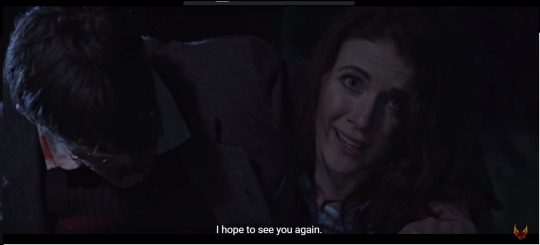
While expanding the universe is not always a practice welcomed by the property owners, S.S.a.t.M., along other fanfilms, is unlikely to be shut down (as long as it doesn’t make any profit), due to the publicity and fans’ craving appeasing it’s giving Harry Potter owners for free, while J.K. Rowling, Scholastic, and Warner Brothers keep the authorship and credit.
Kohen, Melanie E. S. “Fannish Affect, ‘Quality’ Fandom, and Transmedia Storytelling campaigns”. The Routledge Companion to Media Fandom, edited by Melissa A. Click and Suzanne Scott, Routledge, 2018, pp. 337-46.
Coppa, F. (2009). “Things We Don’t Have in the Future and How Fan Arts Can Help.” Talk at the University of the Arts, Philadelphia. www.criticalcommons.org/Members/fcoppa/clips/things-we-dont-have-in-the-future-and-how-fan-arts/view Accessed June 3, 2016.
http://broadstrokesproductions.com/
(Screenshots by me)
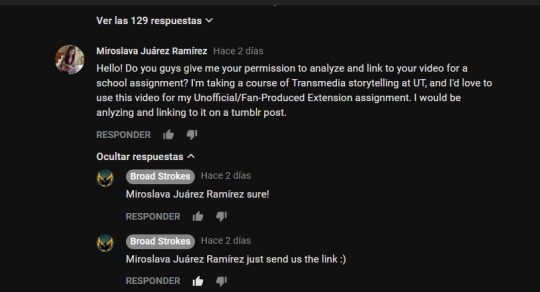
0 notes
Text
Authorized Production and The Star Wars Transmedia Presence
In Authorized Resistance, Is Fan Production Frakked?, Suzanne Scott takes a skeptical look at certain Transmedia extensions that seek to collaborate with their fans while also maintaining textual authority. She clarifies that this is different than the prohibitionist approach that corporate entities will take towards non-authorized fan Transmedia creations. Instead, Scott discusses how “download it yourself” content from series creators can place fan production under “temporal and creative threat,”(211). This is because this new media seeks to reaffirm the original creator’s textual authority and prevent fans from getting the opportunity to create their own media that would interfere with the text’s official canon.
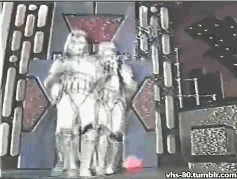
In this example, we’ll look at TK-436: A StormTrooper Story and see how it functions under this transmedia collaboration model that Scott discusses.
http://www.starwars.com/video/fan-film-awards-2016-tk-436-a-stormtrooper-story
TK-436: A StormTrooper Story is a fan-made Star Wars short film that was selected by the Star Wars Fan Film Awards of 2016. The film follows the story of a Stormtrooper named Adam who is forced to confront his pace when he finds that his former lover is fighting on the side of the Rebel Alliance. The fan film has a very high production value and utilized impressive special effects. It doesn’t add much to the main cannon of the Star Wars Skywalker Saga, but it provides an interesting look into the stories of stormtroopers which isn’t really explored by the main star wars Transmedia extensions.
To analyze the relationship of the corporate side of star wars with this fan production, it’s important to look at the nature of the contest itself. According to Wikipedia, the contest had originally not allowed in-universe fan-fiction stories to be told until 2007. This was only because all the movies had been released, and one could assume based on the reading that this was to make sure the official text was not competing with any other. The contest also restricts which copyrighted material that the films could use, limited them to a collection of approved images, music, and sound effects.
Through examining this rules, it can be found that this context seeks to hold a collaborationist relationship with the fans while also wielding some textual authority. They want the fans to be able to produce content to share with other fans, but they place rules and regulations upon the fan productions to fit within the guidelines of the Star Wars brand. Those are exactly the restrictions the TK-436: A StormTrooper Story is falling under, and although it is a fan creation it falls under the power of the Star Wars corporate entity.
Work Cited
Scott, Suzanne. “Authorized Resistance: Is Fan Production Frakked”, Cylons in America Critical Studies in Battlestar Galactica, edited by Tiffany Potter and C. W. Marshall, Continuum New York and London, 2008, pp. 210–222.
Wikipedia contributors. "The Official Star Wars Fan Film Awards." Wikipedia, The Free Encyclopedia. Wikipedia, The Free Encyclopedia, 16 Jan. 2018. Web. 26 Feb. 2018.
0 notes
Text
Man of Tomorrow
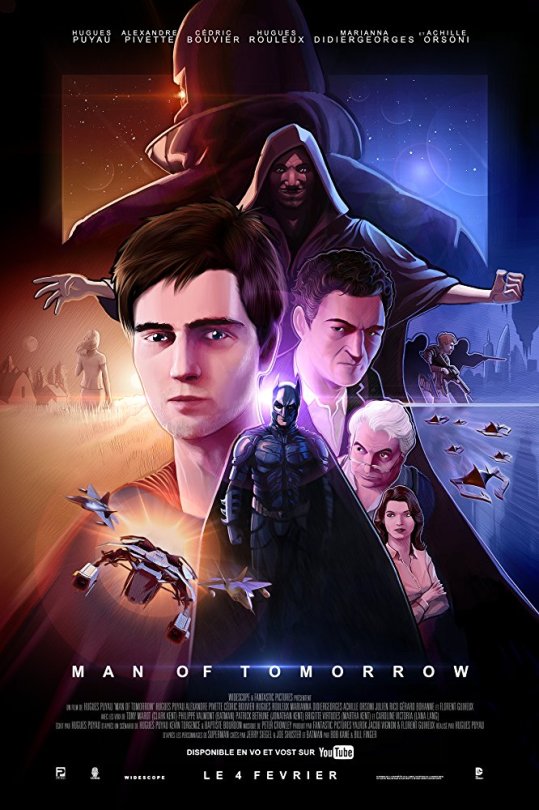
“Man of Tomorrow” (2016) is an unofficial, fan-produced film by the French filmmakers: Hugh Puyau, Jacob Vignon and Florent Guihuex. It has garnered a significant amount of attention, and even won ‘Best Screenplay’ at the Fan Film Awards in 2017. In speculation, the script did not deviate too far from Superman’s most common origin story (that has constantly been revised over time and across different mediums). In this film, Clark Kent (originally born Kal El on the planet Krypton) ends up on Earth, gets adopted by humans, and is raised in Smallville, Kansas. He quickly becomes conflicted in using his powers to protect the innocent -- a confliction of privacy and morality. He ends up moving to the city and lands a job as a reporter in Metropolis, where he meets Lois Lane, Perry White and Jimmy Olsen. Then as we all know, the alter ego Superman in born in the advent of crime and corruption. In this rendition of the story, he also meets Batman. This is interesting as we don’t necessarily see Batman in this ‘seniority’ complex over Superman (especially this early on in ‘canon’), where he and Clark Kent interact before really getting to know each other’s alter-egos.
The film seemed to have a relatively high production value, as identified in the video’s quality, the style and mechanics of certain shots, the locations (Rennes, New York and Vancouver) and also the amount of VFX. Its ‘fannish’ quality was evident in the VFX’s lack of hyper-detail, but overall it was impressive. Going back to story, I believe that most of its success comes from it being an affirmational extension, rather than a transformative one. After all, affirmational texts do the work of promoting a story that is more or less sanctioned by the property owners. In the words of Kohnen paraphrasing Professor Suzanne Scott, “[...] transmedia aims to direct fans’ engagement with the text toward a preferred reading-- one that not incidentally leads to consumption […]”.
What was distinct to me about this film was its structure, as almost the entire first half hones in on emotion rather than action; fight scenes aren’t as ubiquitous and seem to not be the object of interest for the filmmakers. It becomes trademark in this example that “[...] most fan creations delve deeply into the lives of central characters, envisioning moments before, during, and after canon” (Kohnen 341). There is an obvious buildup of ‘affective investment’, where Clark Kent reconciles the voices in his head (of his late father Jonathan and love-interest Lana). Then Batman conveniently swoops in as encouragement to own up to his identity. Some other liberties that they took was in using a slew of Superman’s enemies in collaboration with each other (Darkseid, Desaad, Lex Luther and Gordon Godfrey), to engender this meta message of corporate greed and capitalism, and Omega Corp. representing the ultimate evil (an evil that is contextualized into more tangible, societal terms).
Overall, the film’s success and acceptance by critical fans was due to it being affirmational, and in its deepening of Clark Kent’s psyche (thus making it of quality, because it also doesn’t really skew the property owner’s interpretation of the story or characters).
Sources:
Kohnen, M. (2018). “Fannish Affect, ‘Quality’ Fandom, and Transmedia Storytelling Campaigns.” In: Click, M. and Scott, S. (eds) The Routledge Companion to Media Fandom. New York: Routledge, Taylor & Francis Group, 2018. Print.
Scott, S. (2013). “And They Have a Plan: Battlestar Galactica, Ancillary Content, and Affirmational Fandom.” In: Thompson, E. and J. Mittell (eds.) How to Watch
Television. New York: NYU Press, 320-330.
Man of Tomorrow. Dir. Hugh Puyau. Perf. Hugh Puyau, Hughues Rouleux. Youtube. Youtube, 4 Feb. 2016. Web. 25 Feb. 2018.
"Man of Tomorrow." Internet Movie Database. IMDb, 4 Feb. 2016. Web. 24 Feb. 2018.
youtube
0 notes
Text
Industry’s Pet (The Fans Industry Wants Us To Be)
In the essay “Authorized Resistance: Is Fan Production Frakked?” by Professor Suzanne Scott, Scott discusses topics such as, Jenkin’s Prohibitionist and Collaborationist modes of fan production; Matt Hills’ “just-in-time fandom”; an analysis of Ronald D. Moore’s podcast for BSG and how this dissuades or promotes fan productivity; and how industry production conflicts, collides, and collaborates with each fandom’s creative production. I am going to discuss two ways industry controls fan production by rewarding and teaching fans how they should act by connecting an example set by JK Rowling in awarding a fan website and an example set by Moore in creating the BSG podcasts.
The “Harry Potter Fan Zone” is the awarded, by JK Rowling herself, fan-created website that offers the latest news on the Harry Potter and Fantastic Beast series, The Cursed Child, actors and actresses made famous by the films, JK Rowling, and any new item entering the world of Harry Potter. It also includes official artwork, pictures, videos, canon updates, and many more interesting and exciting features. The common element all of this content shares, however, is it is all pertaining to the original canon or in other words, is information deemed acceptable by Rowling herself. It is the ideal website Rowling would wish for her fans to create. It is celebrating Harry Potter by providing countless articles of interesting information and promoting every element Universal Studios, etc. releases pertaining to the Wizarding World, all the while avoiding fan-created content that expands or changes the Harry Potter canon.
Comparatively, in Scott’s essay she describes Moore’s podcast series as a “combination of intimacy and authority that makes the podcasts fascinating texts…” (218), but also adding later that “fans’ consumption of the podcasts is intimately bound up with the acceptance of Moore’s word as law…” (219). The combination of Moore’s authoritative commentary on the podcasts with fans tuning in to absorb this information, it seems to me a perfect industry tactic of molding Moore into a “Guided Spirit” like creator and fans into collaborators industry wants them to be, in the sense that their consumption and expansion is based on the information Moore describes alone.
This being said, this is exactly the category of fan I fall under. I have no interest in expanding on narrative that wasn’t marked canon by the creators, in this case, JK Rowling of the Harry Potter world. Sure, it’s fun to fantasize about what happened during the 13 years after the Battle of Hogwarts, but ultimately, it’s not “canon” until JK Rowling or the industry that works for the Harry Potter world show it is in the next transmedia text. Finally, regarding the fan-production tactics described above, can we blame industry for want to maintain it’s over-head shadow of fan-production? Like Jenkins says regarding industry’s attempt of including/encouraging fan-production, “Despite their collaborative approach to authorship, transmedia franchises are most successful when ‘a single creator or creative unite maintains control” (221). If the goal for authors and industry is to maintain successful balance and continuation of these transmedia worlds then, by maintaining authorial control, that success is still intact.

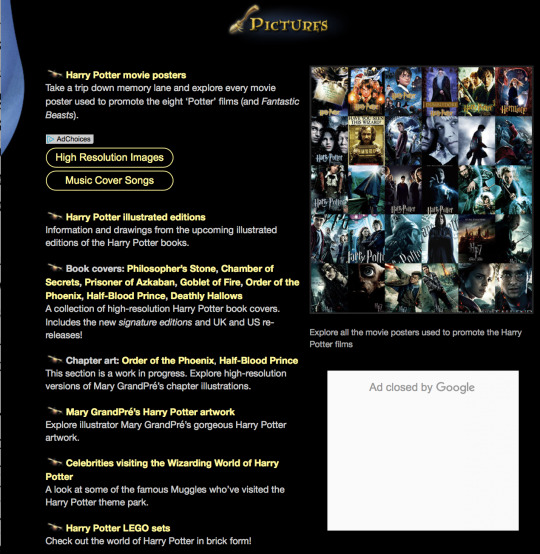
McCray, Andy. Harry Potter Fan Zone, Harry Potter Fan Zone (HPFZ), 2003, harrypotterfanzone.com/.
Scott, Suzanne. “Authorized Resistance: Is Fan Production Frakked”,Cylons in America Critical Studies in Battlestar Galactica, edited by Tiffany Potter and C. W. Marshall, Continuum New York and London, 2008, pp. 210–223.
Jenkins, Henry. “The Guiding Spirit and The Powers That Be.” The Participatory Cultures Handbook, edited by Aaron Delwiche and Jennifer Jacobs Henderson, Routledge, 2013, pp. 53–58.
0 notes
Text
“Potter Wars”: The Industry’s Fear of Fannish Affect

In January of 2000, fourteen year old Harry Potter fan, Heather Lawver, created a website named “The Daily Prophet”. The website functioned as a homage to the fictional periodical featured in the wizarding world of the Harry Potter books and films. On Heathershow.com, Lawver explains the website as “an online newspaper where excited fans could sign up to be columnists reporting on the magical universe they so loved” (“The Daily Prophet”) . Despite the site’s popularity amongst fans, eleven months later Warner Brothers responded to the site with an intimidation letter, ordering Lawver to transfer the domain name under Warner Bros.’ within fourteen days. This dispute with Warner Bros and their fans (stretching beyond Lawver’s case) caused the company to be criticised of “bullying” in the media, and thus became known as the “Potter Wars” (a timeline of the potter wars can be found here).
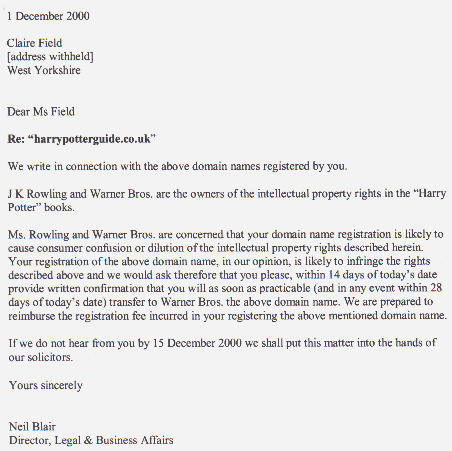
source: StoryFloat

“The Daily Prophet circa 2002″
source: The Heather Show
In relation to Kohnen’s “Fannish Affect, ‘Quality’ Fandom, and Transmedia Storytelling Campaigns”, at the root of fanfiction like Lawver’s is “fannish affect”: affect “functions as collective energy that initiates and sustains gatherings of people and ideas” (339), Kohnen explains. The “collective energy” of fannish affect in Lawver’s “The Daily Prophet” is suggested in the collaborative efforts of the fans as a unified writing staff: “they had to answer to a boss, meet deadlines, work professionally with outs, and either accept assignments or chase down leads of their own” (“The Daily Prophet”). Kohnen goes onto argue that on one hand, this can be dangerous in the eyes of the transmedia producers as this form of affect is “unpredictable and not quantifiable” and thus “might evade the profitable paths set out in official transmedia experiences” (Kohnen 337). In the case of the The Potter Wars, I argue that Warner Bros. were particularly cautious of the narratives with which Lawver was allowing due to the fact that they had not even released the first film, also having no insight yet into the course of J.K Rowling’s future books. Secondly, I argue that Lawvner’s website functions as a “transformative” fandom, which Kohnen explains as “laying hands upon the source and twisting it to the fans’ own purposes” (339), and can be observed in the way in which “The Daily Prophet” became a personalized world in which each contributor could create their own “news” based off the texts’ negative capabilities. Thus, Warner Brothers’ response to this transformative fandom can be illustrated through Suzanne Scott’s words that transmedia storytelling can be seen as “a more covert form of cease and desist letters...discouraging fans from certain… elaborations on the text” (338). In conclusion, the media industry aims to legitimize more affirmational fandoms as their cooperation with a top-down structure of convergence culture can be “commodifiable” for the storytellers. Thus, “The Potter Wars” (an antipode to this top-down structure) is indicative of the outcry that can ensue when the industry rejects fanfiction that does not align with its marketing strategy to endorse affirmational over transformative responses.
Sources:
Kohnen, Melanie. “Fannish Affect, ‘Quality’ Fandom, and Transmedia Storytelling Campaigns.” The Routledge Companion to Media Fandom. Routledge, 2017. 337 - 346.
Lawver, Heather. “The Daily Prophet" .” The Heather Show, www.heathershow.com/dailyprophet/.
0 notes
Text
Warcraft’s 2015 Student Art Competition: “Quality” and The Tyranny of Corporate Interest
Since the 2004 release of Blizzard Entertainment’s flagship MMORPG; World of Warcraft, the Warcraft universe has engendered one of the most enduring and impassioned fannish affects ever to fructify from a video-game. Through both official and unofficial community forums, the perceived limitlessness of “Azeroth” beckoned the Warcraft fandom to let their affect stretch beyond the known and into uncharted storyscapes woven into the fabric of the text. Dr. Melanie Kohnen defines “affect” as a “strong emotional attachment... that connects fans and texts to each other” (Kohnen 339), she qualifies this assertion by suggesting that “fannish affect” is what “fuels transmedia engagement,” as “[f]ans engage with transmedia extensions because they have an emotional attachment to the storyworld” (Kohnen 337). In the community’s formative years, Blizzard published submitted fan-art on the official World of Warcraft web-page, and was lauded for its support of the creative overgrowth that spilled from fan communities into the gaps and margins of Azeroth. Curiously, as we neared the 2016 release of the Warcraft film, the steady publication of fan-art onto the official site slowed, until ceasing entirely. Kohnen notes that when affect “evade[s] the profitable paths set out in official transmedia experiences,” “industry seeks the ‘right,’ ie predictable and commodifiable, response from fans” (Kohnen 337). Considering that Blizzard was, at the time, planning to embark on its most public and ambitious transmedia venture (one that would assert a de-facto Warcraft canon on an international stage)-- Blizzard’s cessation of fan-art publication suggests that once stepping more visibly into the public eye, they chose to retract their sanctioning of general fandom and shift toward supporting only “quality” fandom, or the fandom “that is desirable to the industry” (Kohnen 338).
After said “cessation,” Blizzard announced official “Student Art Competition,” which tasked current college students with “using [their] creativity and ability to work within the World of Warcraft art style [to] concept, model, and texture a non-player character (NPC) that you could imagine [existing within the World of Warcraft]” (Blizzard 2016). According to the limitations set by Blizzard-- legitimated fan art must now not only fit aesthetically into Blizzard’s fictive world, but it must also play within the narrowing conceptual margins of what could be implemented into Blizzard’s game. Take now the winner and runner-up of the 2015 contest, as announced in March of 2016. Both creators submitted works that fit snugly into the aesthetic of the World of Warcraft, however, the runner-up took bold conceptual liberties, whereas the overall winner played safely within pre-existing conceptual frameworks.
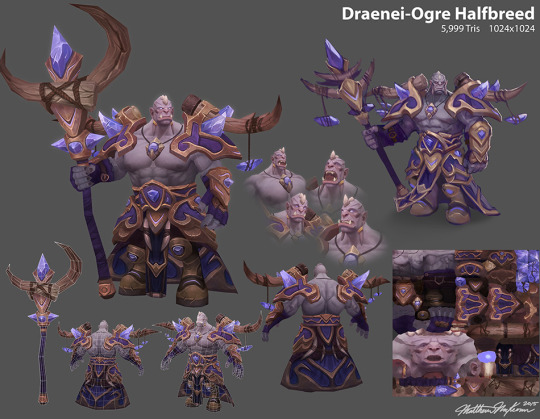

The overall winner’s “Draenei-Ogre Halfbreed,” presents a visual blending of two Warcraft races, both of which call the planet Draenor home, and both of which predominated the (at the time) ongoing expansion: Warlords of Draenor, (the result is one that bears striking resemblance to existing NPC Garrosh Hellscream.) Compare this with the runner-up “Goaty,” a more “feminized” and whimsical, elk-like goat concept that bears no resemblance to preexisting in-game models and does not stylistically or conceptually beckon the viewer back to the content of the existing expansion. Despite Blizzard’s ruling, fans received “Goaty” with a warmth unmatched by its more predictable counterpart.
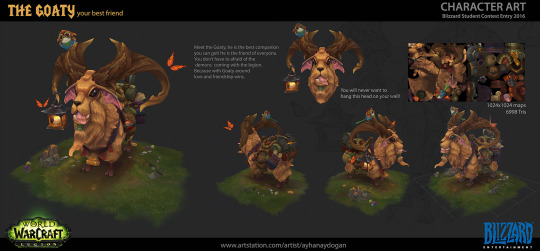
Blizzard’s attempt to corral fan creation into the confines of official spaces and predefined conceptual frameworks aligns with Kohnen’s detailing of emerging transmedia engagement strategies, which seek not only to control, but make profitable the fannish affect inspired by their intellectual property. As noted by Kohnen; “transmedia campaigns legitimate ‘quality (masculinized) fandom’... [a] legitimation that crucially depends on the denigration of... fans that are perceived as unpredictable” (Kohnen 345). As evidenced by the disparity between the community’s and Blizzard’s perception of “quality”-- by only legitimating the submitted content that sits predictably within preexisting narratives and profit channels, Blizzard establishes a dangerous precedent that discourages the often imaginative, erotic or otherwise revisionist content that emerges from the fannish affect that binds together much of the community. A community that has kept the franchise popular far beyond its expected life-span.
Work Cited
Kohnen, Melanie. “Fannish Affect, “Quality” Fandom, and Transmedia Storytelling Campaigns”. The Routledge Companion to Media Fandom, 1st ed., 2017, pp. 337–346.
“Blizzard Entertainment Student Art Contest 2016 - WoW.” World of Warcraft, 15 Oct. 2016, worldofwarcraft.com/en-us/news/20331069.
“2015 Blizzard Student Art Contest Winners - WoW.” World of Warcraft, 8 Mar. 2016, worldofwarcraft.com/en-us/news/20056878.
0 notes
Text
A Dazzling Experience
Melanie Kohnen’s article presents many arguments regarding how the fannish affect plays positive and contradictory roles. While a fan text may serve to enrich the fans interest in a certain text and serve engagement it causes producers to fear the unpredictably because it distracts from the official transmedia stories they created, ruining their chances of creating profit. A unique video that really describes Kohnen’s first argument is a fan produced video that was shot in a music video format titled Sight of the Sound that centered around an X-Men character called Dazzler.

The character of Dazzler was first introduced in the 1980’s and became instant hit, what made her a hit is that she was one of Marvel’s unorthodox characters by being a singer/ superhero who followed many of the trends of the 1980s. Another aspect of her popularity is that her powers focused on light manipulation which she used to create light shows during her performances and fulfilling heroic deeds with.
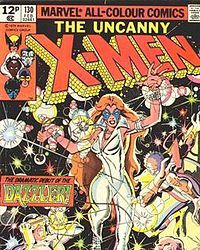
What makes this video unique is that it combines all types of fan content such as fan film, vid, and cosplay, into one big video while also paying close attention to the characters extensive history. Following Kohnen’s first argument we can see that the fan film has a strong emotional attachment because it is a music video so it stays true to the character and puts in many of the lore and back story that many know about her, such as her former work place, the tense relationship with her father, and the costume she once wore from the comics, plus many more easter eggs.

What is unique about the video is that it shows Dazzler performing in her own music video singing her own song and so forth showing this fannish affect because it creates a richer world. Something that is unique as well is that the fans of this video didn’t add any narrative extensions or tell a brand new story rather they showed the backstory that many fans already knew about Dazzler and told it in a different way, which made it feel fresh but also to where it doesn’t feel out of the blue almost as it had already existed in our ideas.
Works cited
Kohnen, Melanie. “Fannish Affect, “Quality” Fandom, and Transmedia Storytelling Campaigns”. The Routledge Companion to Media Fandom, 1st ed., 2017, pp. 337–346.
Bautista, Arvin.
Alison Blaire - “Sight of the Sound” Dazzler fan music video & cosplay. 2014 https://vimeo.com/100612049
Wwst, oneshyguy46, Heathenwarrior. Dazzler (Alison Blaire). Marvel Universe Wiki
http://marvel.com/universe/Dazzler_(Alison_Blaire)#axzz589tAPUvG
vimeo
0 notes
Text
#BlackHogwarts and Fannish Affect
Representation in media allows for people to feel appreciated as a member of society and that they belong. If you see someone like you on TV or in movies, you are more likely to feel accepted. With social media movements like #OscarsSoWhite, the industry has attempted to fix certain racial representation issues. Movies like Black Panther have broken cultural boundaries and box office records, starting social media movements like #WhatBlackPantherMeanstoMe, showcasing how representation in mainstream Hollywood media is affecting adults and children alike. Still though, Hollywood is not doing a perfect job of representation, leading to fans taking matters into their own hands. In early January of 2018, African American fans of the book and movie series Harry Potter to reimagine the series as if all of the characters were famous black actors. This lead to fans casting Donald Glover as Harry, and Idris Elba as Sirius Black, and fans took this one step further and began using common gifs and memes on Twitter and reimagining them, using them as reaction gifs to specific moments in the Harry Potter series. Melanie Kohnen refers to this as “affect”, in her essay “Fannish Affect, “Quality” Fandom, And Transmedia Storytelling Campaigns” in which she says affect is a “strong emotional attachment” that “also functions as collective energy that initiates and sustains gatherings of people and ideas”. Social media brings people from all different backgrounds together, building a collective energy. Energy is scalable though. In the case of #BlackHogwarts, there was a large amount of fan interaction. One fan, @fantasticboyage, made this tweet (https://twitter.com/fantasticboyage/status/951539645535408130), in which he uses a gif of Rupaul Charles, a famous drag queen, transforming between male and female representations. He uses this gif with the caption “Welcome to Advanced Transfiguration, second years. #BlackHogwarts” Rupaul is a black cultural icon as well as a figurehead in the queer community, spearheading the movement to bring drag to the forefront of American Culture. I chose this tweet because not only does it showcase a gathering of people and ideas in the Black community, it also allows for queer representation. Queer fans of Harry Potter received representation in the book seemingly as an afterthought, when J.K. Rowling chose to retcon in the fact that Dumbledore was gay during an interview, years after the final book was released. She seems to force in these moments of representation after the release of the book, leaving fans to create their own fannish affect through fan fiction, cosplay, and reimagining characters as someone who more represents them.
0 notes
Text
Tales From The Black Gate: Chroniclers
In the reading “Sites of Participation: Wiki Fandom and the case of Lostpedia” Jason Mittell writes that fan wikis “...constitute a system of participation” (Mittell 1.3). This system can be easily seen on the Tolkien wiki, also known as The One Wiki to Rule Them All. Currently, the fanon section of The One Wiki to Rule Them All is holding a contest called “Tales From the Black Gate: Chroniclers” in which fans can utilize Wikia’s new map feature to chronicle their own tales of The Black Gate of Mordor in the sixty years between the Hobbit and The Lord of the Rings. A winner is chosen through fan vote, and will have their story placed on the front page of The One Wiki to Rule Them All.
In the reading, Mittell refers to Sarah Toten’s take “...that wiki’s as a platform seem to be better suited to such typically masculinist pursuits of cataloguing and analysis than to feminine creativity and community,” and states that his experiences have been different than Toten’s and complicate the “neat linkage between technological platform, gender identity, and mode of fandom,”(Mittell 2.2). “Tales from the Black Gate: Chroniclers” supports Mittell’s take on wiki’s rather than Toten’s, as it is event being held for the sole purpose of fan creation rather than fan collection. Mittel furthers his argument stating that Toten’s viewpoint is flawed as different Wiki’s demand different analysis as they may be larger or more in depth. The One Wiki to Rule Them All, being incredibly large with a ton of fan involvement, more closely aligns with Mittell’s view on sites of participation.
“Tales From the Black Gate: Chroniclers” can be seen as a parallel to “The Lost Experience”, the ARG that Mittell mentions in his essay. Much like “The Lost Experience”, “Tales from the Black Gate: Chroniclers” acts as an example of a wikis “...dual function as a catalog of canon and a site of original creativity,” (Mittell 2.34). Despite the contests goal of encouraging fan original content, it does have very specific guidelines that creators must follow, most notably the time period of the canon in which they are allowed to create their stories. This is done to protect the boundaries between fanon and canon, and keep the wiki in control over its own contest. “Tales from the Black Gate: Chroniclers” is a noteworthy showcase of a wiki’s ability to not only encourage and cultivate original fan content on The One Wiki to Rule Them All, but also the wiki’s ability to control the distinction between fanon and canon.

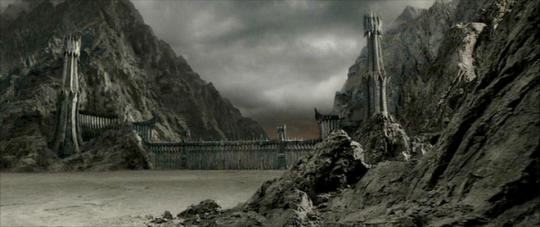
Mittell, Jason. “Sites of Participation: Wiki Fandom and the Case of Lostpedia.” View of Sites of Participation: Wiki Fandom and the Case of Lostpedia | Transformative Works and Cultures, journal.transformativeworks.org/index.php/twc/article/view/118/117.
http://shadowofwar.wikia.com/wiki/Portal:Tales_from_the_Black_Gate
http://lotrfanon.wikia.com/wiki/Main_Page
0 notes
Text
The 100: Trigedasleng
The CW television series The 100, has created a fairly popular fandom that focuses on all aspects of the show. One of the most interesting fandoms created by the show is the focus on the language “Trigedasleng”, that is spoken by the “grounders” within the series. Different languages that are created for a world within a show always tend to become popular among fans, such as “Klingon” from Star Trek, and “Dothraki” from Game of Thrones. Trigedasleng from The 100 is no different, fans obsess over the language and try to learn to speak it themselves. Trigedasleng has its own wiki page within The 100’s wiki fandom page. Jason Mittell defines a wiki as a “structure that privileges particular possibilities of use and creation”, (Mittell, par. 1.3). The Trigedasleng wiki gives a history of when the language was first spoken in the show, and of course, by whom. As well as giving some of the most popular phrases and uses of Trigedasleng within the show. This allows fans to feel more connected within the world of The 100, as well as more connected within the fan community of the show itself. Mittell’s anaylsis focues on the television series Lost, however most fan wiki’s follow the same principles of “sharing archive data, culling information from the show, its brand extensions, and its cultural references to make sense of the show’s mysteries and narrative web”, (Mittell, par. 2.4). Making a Trigedasleng wiki does exactly this. Fans are able to come together to discuss different translations and the different meanings of phrases spoken throughout the series. There are also links to different websites that help teach fans how to speak the language, and phrases that are made up by fans based on the language principles stated within the show. Fans also discuss how the language of Trigedasleng has evolved over time from English. Fans suggest their own narrative of how they believe the language has developed, since this topic is not directly answered within the canon narrative of The 100. Language alone opens a door for more fan narratives and possibilities to be considered. The wiki also gives a back story on the creator of the language, David J. Peterson, and how he created Trigedasleng for the television show. Fans comment on what they believe Peterson meant by certain phrases that are spoken within the show. Peterson is given the authorship of the language, and what the dialogue means within the show, not the director or script writers of the series. Fans have reached out to Peterson on his Tumblr to ask for clarification or explanation on a specific phrase spoken. Fan wikis allow for fandom to expand and consider different possibilities. Even within a small aspect of The 100, Trigedasleng, fans are able to create many different narratives and proposals that allow for discussion.


Sources:
Mittell, Jason. “Sites of Participation: Wiki Fandom and the Case of Lostpedia”. Transformative Works and Cultures, Vol. 3, July 2009, http://journal.transformativeworks.org/index.php/twc/article/view/118/117. Accessed 25 Feb. 2018.
“Trigedasleng”. Wikipedia: The 100. Wikimedia Founation, Inc. 22 July 2004. http://the100.wikia.com/wiki/Trigedasleng#. Accessed 25 Feb. 2018.
0 notes